

Explore Italy by place | region | time period
The Neolithic Age » Val Senales (Bolzano,South Tyrol)
On the afternoon of 19 September 1991, two German tourists, Helmut Simon and his wife Erika, were hiking in the Venoste (or Öetztal) Alps. They sighted the remains of a man emerging from a puddle of ice water near the high Val Senales (Similaun, 3,208 meters), about fifty meters from the path. He was in a prone position, with his left arm stretched and crossed in front of his chest, while the right arm was stretched along his side. His clothes and accessories were found scattered a few meters away behind him.
He was a well-preserved mummy who was nicknamed Öetzi, the man from the ice. He soon became world famous.

Climate change had resulted rising temperatures. The consequent retreating glaciers had brought to light the mummy of the man of Similaun. Öetzi had lived about 5,300 years ago, between the end of the Neolithic and the beginning of the Copper Age (about 3400 - 3100 years BCE).
Originally he was 1.60 meters tall and weighed 50 kilos, while at the time of discovery he was 1.54 meters tall and weighed 13 kilos.

The mummy is called wet because he undergoes a process of natural mummification inside the glacier.
In fact Öetzi was lying in a hollow among some rocks which protected him from the movements and pressures of snow for millennia. Just hours afte his death, a first thin layer of snow covered his body. It was fundamental for two reasons: first of all it avoided that the body was mauled by animals and then preserved it intact; then it prevented the body from drying out before freezing, thus favoring the beginning of the mummification process.
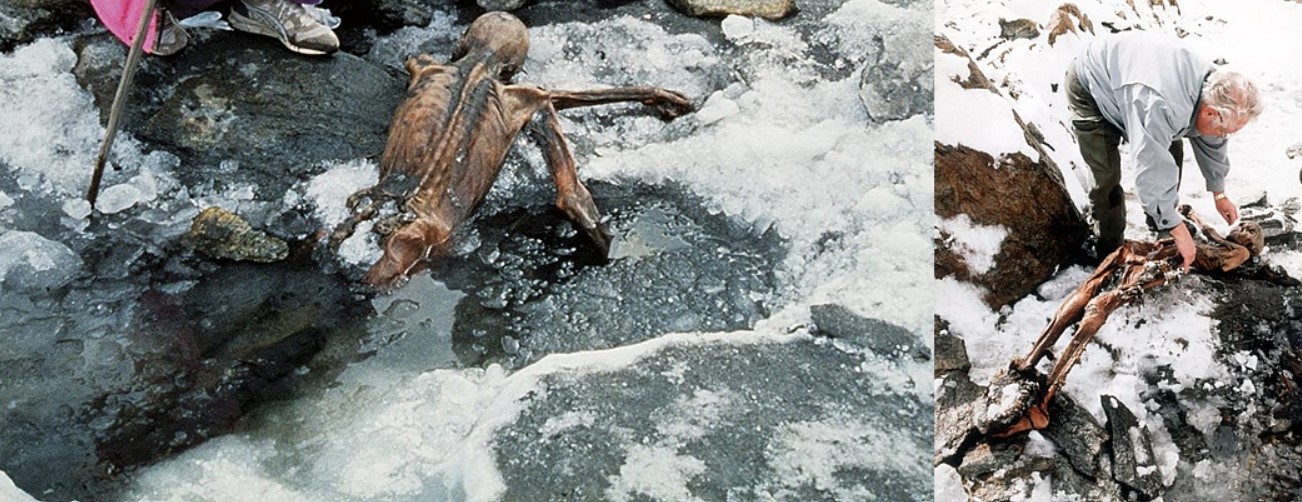
The numerous wrinkles which ploughed through his face confirm that he died in mature age, between 40 and 50 years. He survived in a very hostile environment despite the pathologies he suffered from: Lyme disease contracted after a tick bite; periodontitis, inflammation of the gums; gallstones and arthritis which he tried to traet with 61 tattoos. They were therapeutic becausee they were made at the joints. The tattoos depicted groups of lines or crosses. The two on the chest coincide with the point where we know that Öetzi suffered severe pain due to heart problems (atherosclerosis).
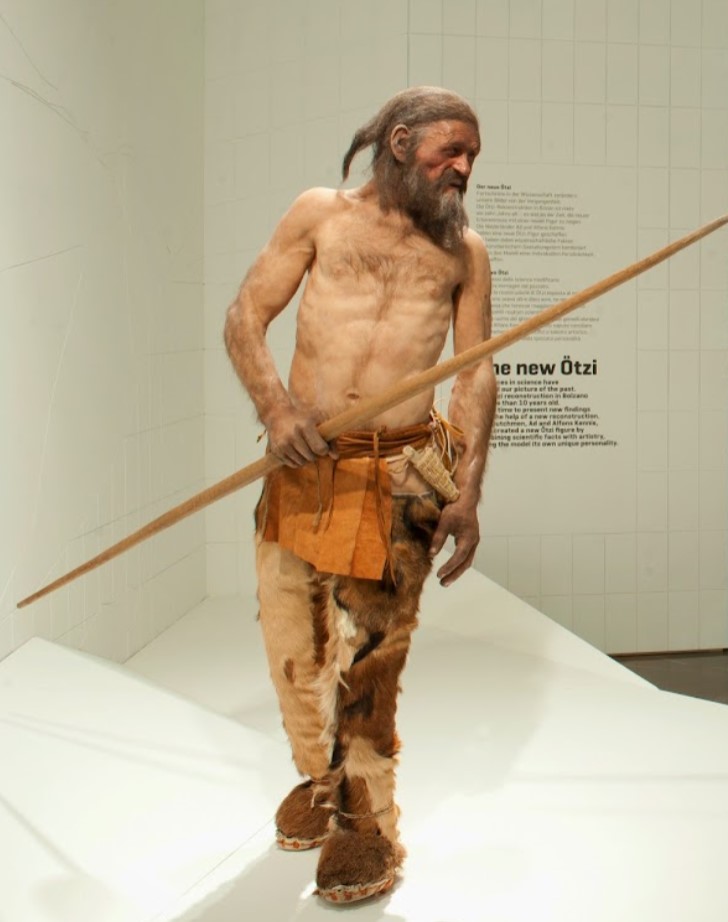
Prehistoric men carved the skin and rubbed the wounds with coal dust to make tattoos. We don’t know for sure if his tattoos had aesthetic or therapeutic purposes, or some mysterious religious or symbolic meaning. It is notable to be pointed out that they are located in parts of the body normally covered by clothes and that many of the tattooed areas correspond to the main lines of acupuncture. In fact, cutting the nerve fibers during treatment can relieve pain and his tattoos were made in places where his body was subject to wear.
So far it had been supposed that this therapeutic practice had developed in Asia only two millennia later.
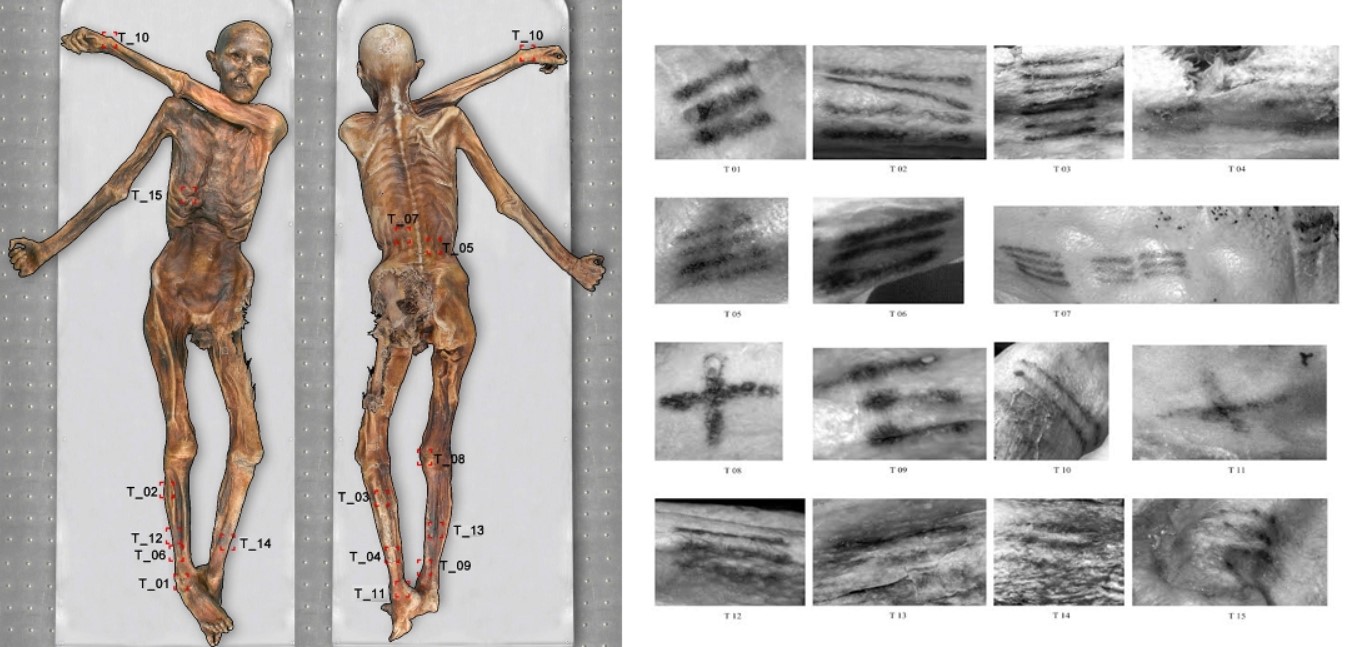
The end of Similaun’s man was shrouded in mystery for years. Initially, it was thought that he died in an accident while trying to cross the Alps, but traces of blood belonging to four individuals found on his robes confirmed that he was killed treacherously.
Öetzi rested when he was killed and his last moments of life were a slow agony.
The killer came up behind him and shot an arrow at him from about thirty meters that severed an artery. Similaun’s man fell to the ground and knocked his head against a rock, lost consciousness and bled to death. The position of the mummy suggests that, after death, someone would turn Öetzi to try to pull out the arrow. He tore the shaft but could not remove the tip that remained stuck in the left shoulder, a fatal wound which paralyzed the arm and cut the artery, causing death by bleeding.
The purpose of the murder was not the theft of his valuables because they were left there. The motive was due to some personal conflict, perhaps linked to the previous clash that took place days before Öetzi was wounded in the right hand by a sharp object. He had applied a moss with healing properties on his hand, thus managing to begin to make it heal. The use of medicinal plants was already common among Neanderthals, so it is not surprising that there were two pieces of Piptoporus betulinus, a birch fungus known for its antibacterial properties, in his two belt pockets.
Perhaps Öetzi had taken hasty flight after the clash seeking shelter in the Alps, but was pulled out from his killers.
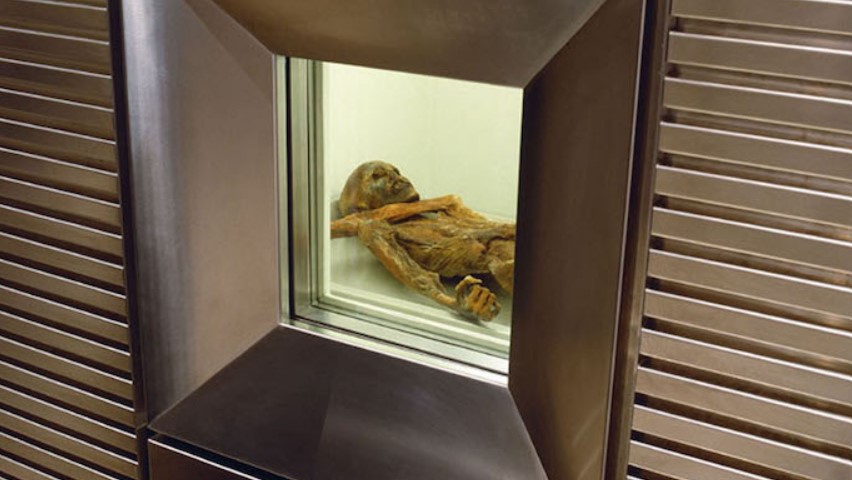
Recent research resulted in new discoveries about Öetzi’s DNA. We know that about 8000 years ago, hunter-gatherers from Western Europe gradually mingled with the first farmers migrated from the Near East (Anatolia). Steppe shepherds from Eastern Europe joined them about 4900 years ago. We can confirm that he had a high percentage of genetic material of "Anatolian" farmers, with modern research concerning his DNA.
Today the natural mummy of Öetzi is exposed in the same position where it was found, although supine, inside the South Tyrol Museum in Archaeology, in Bolzano.
In order to know more, you can visit:
- Wikipedia: [1]
This page was last edited on 8 June 2024
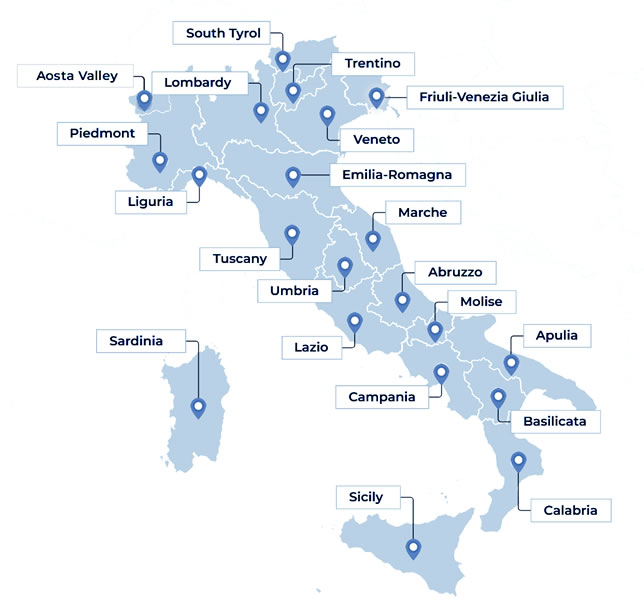
Open in Google Maps and find out what to visit in a place.
Go to: Abruzzo | Aosta Valley | Apulia | Basilicata | Calabria | Campania | Emilia Romagna | Friuli Venezia Giulia | Lazio | Liguria | Lombardy | Marche | Molise | Piedmont | Sardinia | Sicily | South Tyrol | Trentino | Tuscany | Umbria | Veneto

Text and images are available under the Creative Commons Attribution-ShareAlike License 4.0; - italystudynotes.eu - Privacy